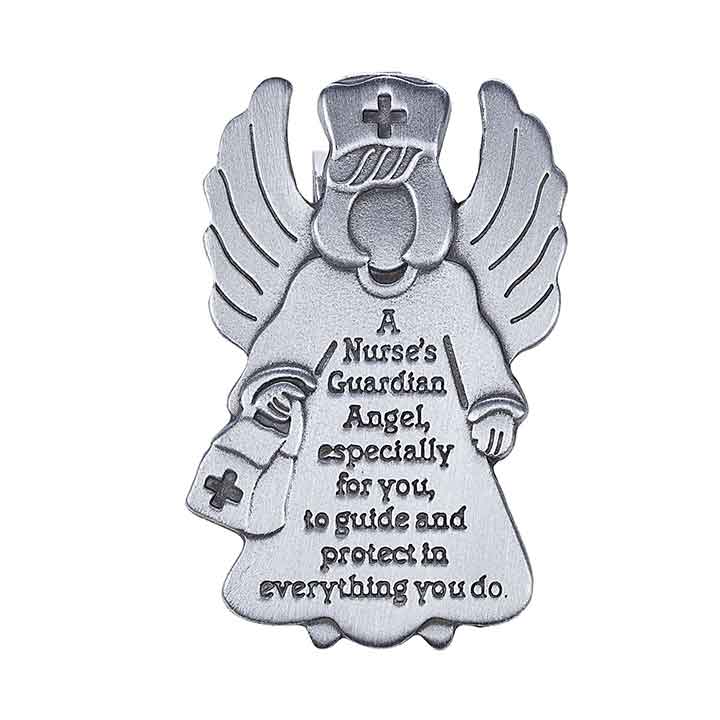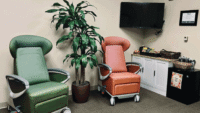The role of clinical nurse leader (CNL) has received a mixed reception within nursing, primarily because of a lack of understanding as to how to transfer the role and its purpose into clinical practice, as well as a lack of clarity between the CNL role and that of other master’s prepared nurses such as the clinical nurse specialist (CNS), clinical nurse educator (CNE) and advanced practice registered nurse (APRN).
A new role is launched
The origins of the CNL date back to 1999 when the Institute of Medicine (IOM) produced the report To Err is Human: Building a Safer Health System, which highlighted the large number of patient deaths that occurred as a result of avoidable medical errors.
In response to this and subsequent papers by the IOM, the American Association of Colleges of Nursing issued a White Paper on the Education and Role of the Clinical Nurse Leader™. This paper identified an approach to strengthening nursing leadership at the “point at which care is delivered” to improve patient safety and strengthen the quality and outcomes of the care delivered.
Unique role
There are several key differences between the CNL role and that of the CNE, APRN, and CNS.
CNEs may or may not be unit based, but are not usually involved in the direct care of patients, nor do they have a defined caseload. They are responsible for providing education, facilitating certification programs for staff in their defined areas, and developing new educational initiatives designed to improve clinical practice. CNEs are often the link between a unit and the schools of nursing who place students there for clinical experience. CNEs also help ensure education related to The Joint Commission and other standards is given.
By comparison, CNLs provide education to all the different professional groups they work with as they integrate evidence-based practice and change at the point of care. They are likely to liaise with the CNE as part of the unit leadership team when areas of educational need are identified and work with them to monitor and feedback on the effectiveness of the educational interventions provided by either CNEs or CNLs.
The CNL role has been compared to the APRN because of the educational modules that enable CNLs to have a greater knowledge in pharmacology and an advanced skill set in physical assessment. However, educational preparation does not prepare CNLs to the level of the advanced practitioner that is synonymous with the APRN role, who is also generally regarded as a specialist within a particular area of practice. Unlike the CNL, the APRN is often part of a medical team, and may be one of the first people patients may meet as they enter the healthcare system, whether in a hospital, a clinic, or a physician office.
CNSs focus on a specific client group such as geriatrics, cardiology, or oncology patients, whereas CNLs are advanced generalists — their caseload typically include a variety of age groups who have many different disease processes or surgeries. CNSs also have a caseload that usually originates through a referral system, which can take them throughout the facility. Conversely CNLs are based on one particular unit or environment, such as a medical/surgical unit or an outpatient clinic, and have a caseload that consists of all the patients/clients in that particular area.
Working at the point of care
In their Transforming Practice, Transforming Care™ model for the clinician at the point of care, Monaghan and Swihart identified six elements of the CNL role, all of which are inter-related and need to be mastered:
- Leadership and change
- Interdisciplinary relationships
- Knowledge transfer
- Outcomes management
- Clinician at the point of care
- Professional development
It is the clinical component of the CNL role and the definition of his or her caseload that has caused many challenges in their implementation into the workplace.
Unlike unit nurses who could be assigned between two and ten patients depending on the shift they are working and the clinical environment they are working within, CNLs’ assigned patient cohort consists of all the patients within a defined unit.
While CNLs work at the point at which care is delivered this does not mean they necessarily provide the hands-on care of their patient cohort. Their role is not primarily as a direct caregiver but rather a facilitator of direct care. They work with the clinical staff who are involved in the care of the patients; provide support and assessment of patients who have complex healthcare, discharge, and rehabilitation needs; provide direction and delegation to care delivery for this group; make referrals when necessary; round with the medical and interdisciplinary teams; and coach and support the direct caregivers in their unit or environment of care.
As a lateral integrator of care, CNLs work across and within the interdisciplinary and interprofessional boundaries to introduce evidence-based practice, evaluate clinical interventions, and work in their role as co-coordinator of care.
CNLs form part of the clinical leadership team within a microsystem of care, facilitating the delivery of safe, outcomes-based practice that represents the needs of their patients and the organization’s agenda. CNLs adopt a horizontal approach to their leadership, that is, a networking style that enables information to be transmitted quickly to other disciplines. The approach promotes involvement of staff at all levels in decision-making, compared to the more traditional vertical hierarchy, which is based on the individual being in a position of power.
CNL success
The Veterans Health Administration (VHA) has actively embraced the CNL role and pledged to introduce CNLs into each of their facilities by 2016. The VHA has already seen remarkable successes in some of their medical centers as they integrate the CNL role, including:
- An increase in nursing hours per patient day
- A reduction in sitter hours for patients with dementia
- A decrease in perioperative and gastrointestinal patient cancellations
- An increase in the compliance of providing discharge teaching by the nursing staff
- A reduction in ventilator-associated pneumonia.
Non-VHA facilities also report benefits from introducing the CNL role such as a reduction in falls, nosocomial infections, and pressure ulcers.
In 2007, Hartranft received anecdotal reports from physicians who were supportive of the CNL role and who identified the CNL as their “go to” person. In addition, some nurses have stated that having a CNL on their unit has made them “want to be a better nurse.” Unfortunately, these and other less tangible aspects of the CNLs role, such as its impact on staff recruitment and retention, and patient satisfaction, are more difficult to measure. However, as nursing is both a science and an art it is important that qualitative measures are considered when evaluating the CNL role.
Undoubtedly, the CNL has a significant role to play in the introduction of Relationship-Based Care as a model of care delivery for those healthcare facilities who are or are seeking or already have received designation as a Magnet® facility. With their unique ability to traverse across all the different disciplines CNLs are perfectly placed to break down some of the institutional and professional barriers to facilitate an appreciation between the different professional groups of each other’s role in the adoption of a more patient centric approach to care delivery.
Implementing the CNL role
Several factors need to be considered by every facility before and during implementation of the CNL role, including how they will
- Manage resistance from nurses and other professional groups to the new role
- Ensure that a conflict does not emerge within the unit team around the leadership element of the CNL role
- Provide the CNL with the mentoring opportunities he or she needs to grow into and develop the role.
- Create an environment of safety for CNLs as they explore their role and which allows them to take risks with new relationships and ways of working.
- Determine a clear evaluation strategy for the CNL so that successes can be determined and challenges evaluated.
Introducing a CNL into the unit team is like introducing any other change. It needs to be carefully prepared for, resistance pre-empted and the role visibly supported by the nurse manager and the executive leader. The CNL role is an exciting opportunity for career bedside nurses who can advance their career goals without losing the clinical focus.
Future trends
With the signing of The Patient Protection and Affordable Care Act of 2010, many more Americans will have the opportunity to receive elective and preventive health care. This will increase the pressure to maintain and improve existing outcomes and provides an ideal opportunity for CNLs to develop the role in a variety of clinical arenas.
While CNLs have a shared goal with every other healthcare worker in providing the best and safest care possible to their patients and clients they serve, they are also the final piece of the clinical puzzle to achieving them. As we continue to see their numbers grow and more of their successes reported, we will also see that they are indeed the guardians of quality care.
Heather M Monaghan is President/CEO for Visioning HealthCare, Inc., in Sarasota, Florida.
References
AACN. White Paper on the Education and Role of the Clinical Nurse Leader™ American Association of Colleges of Nursing. 2007. Accessed 7/28/10 at http://www.aacn.nche.edu/publications/white-papers/cnl
Clark D. Horizontal Leadership: Bridging the Gap. 2004. Accessed 6/11/10 at
www.nwlink.com/~donclark/leadership/horizontal.html Institute of Medicine. (1999) To Err is Human: Building a Better Health System. Washington DC: National Academy Press.
Hartranft S, Garcia T, Adams N. Realizing the anticipated effects of the clinical nurse leader. The Journal of Nursing Administration. 2007;37(6):261-263.
Monaghan H, Swihart D. Clinical Nurse Leader. Transforming Practice, Transforming Care. A model for the clinician at the point of care. Sarasota, Visioning HealthCare Inc. 2010.
Ott K, Haddock K, Fox S, Shinn J, Walters S, Hardin J, Durrand K, Harris J. The Clinical Nurse Leader: impact on practice outcomes in the Veterans Health Administration. Nurse Econ. 2009;27(6):363-370.


















8 Comments.
I feel your pain, Cheryl. I am a CNL on a busy 24 bed cardiovascular unit and I am still struggling with actualizing the role of the CNL in the workplace. I don’t think we’re going to find a resource for the “CNL daily role.” I can tell you that I report directly to the Program Director and work closely with the RN manager and APNs. I would recommend reading the “Transforming Practice, Transforming Care” book that this article mentions. I found it very helpful!
I found your article one of the most clarifying articles I have found.What does the daily role look like? I am currently the RN Care Manager on a tele floor. We are starting a pilot with a modified role of the CNL. My title will be the Clinical Leader. We are a Magnet facility using the RBC model. I will be responsible for 12 pts. I don’t want to be a task nurse changing IV’s, fielding multiple calls from house sup, etc. 8,10, 12 hr shift? Who covers w/e’s? CNL loc. on unit? Reporting ladder?
There are four advance practice nurse roles: Clinical Nurse Specialist, Nurse Practicioner
APRN education forms the basis of four recognized general areas of specialization:
Nurse anesthetists (in the United States, Certified Registered Nurse Anesthetists(CRNAs)
Certified Nurse Midwives (CNMs)
Clinical nurse specialists (CNSs)
Nurse practitioners (NPs)
CNSs are Advanced Practice Nurses (APRNs) according to the AACN APRN Consensus statement. They should not be singled out.
Thank you for a clear and comprehensive article.The future of Nursing is so critical in improving the quality and safety of our patients. The CNL is well positioned to be part of the new health care delivery system especially with their expertise in managing microsytems and EVBP. I know first hand the tremendous difference they make in terms of quality outcomes. I hired 6 CNL’s. Utilized properly with the correct support they are worth every penny. Linda Rusch MS,APN-C AACN CNL Resource Coach
Thank you so much for the article. It has been tough here to gain recognition for this role but I continue to “chip away” and try to educate. Marjorie Pound RN, MSN, CNL, FNP